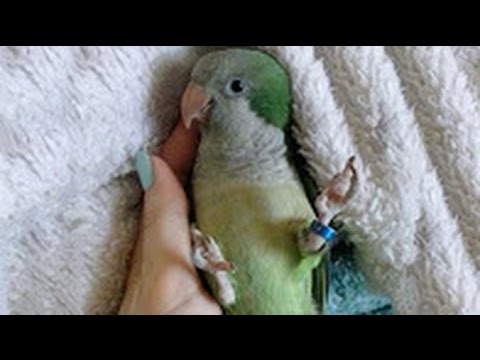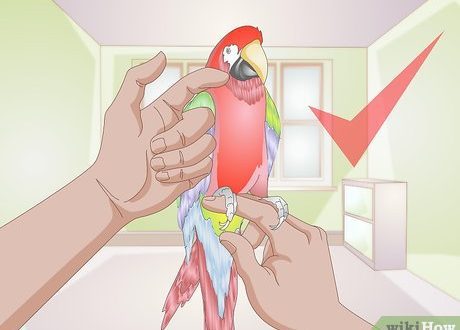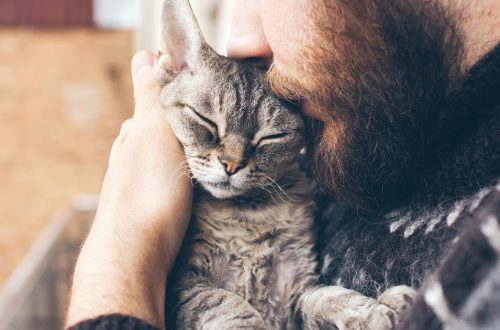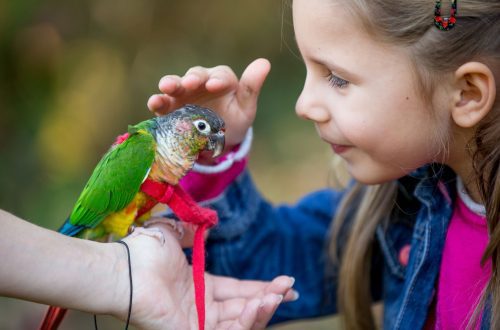
Fractures in parrots and first aid
Fractures in a parrot usually require first aid in the form of a splint.
How to splint a parrot with a fracture
1. First of all, feed the parrot well and leave it alone for a while so that it calms down a little. Exception: severe bleeding, not allowing the slightest delay. In this case, you must urgently contact a veterinarian, otherwise the bird may die.2. You can give a few drops of water from a pipette with the addition of glucose or sugar.3. Prepare everything you need for dressing:
- disinfectant
- sterile gauze
- towel
- small scissors
- adhesive plaster
- cardboard
- cloth
- tweezers.
4. Cut off a few band-aids so that they are at hand.5. If the bird has an open wound, it should be treated with hydrogen peroxide and covered with a gauze pad. 6. In a state of shock, the bird rushes about. To limit her movements, take a sock with a cut hole. The diameter of the hole should match the size of the parrot’s head. Another hole is made for a damaged foot or wing. Put this sock on the bird, stick the head and injured limb into the holes. Make sure that the parrot can breathe freely.7. If the parrot continues to worry, throw a piece of cloth over his head. However, make sure that it does not interfere with breathing.8. Proceed to the imposition of the tire. Do not squeeze the parrot too hard, so as not to break something else. Ointments are not recommended, as feathers stick together from their use, and the bird experiences great anxiety.
parrot wing injury
Injury to the wing of a parrot is very dangerous, since the slightest movement is fraught with displacement of the bones. Therefore, any damage will require a serious approach.
If you have no experience with splinting, you are unlikely to manage on your own. Therefore, it is better to consult a veterinarian. In addition, the doctor will be able to administer anesthesia, which will save your feathered friend from severe pain.
If it is not possible to deliver the bird to the clinic, the following recommendations can be followed. In the event of a wing fracture in a parrot, a splint should be applied immediately. If the joint is simply displaced, a splint is not needed, just dressing with a bandage is enough. The displacement of the joint heals in a few days, the fracture takes 2-3 weeks. But if the nerve is damaged, recovery will take longer. If the fracture is severe, the bird holds one wing much lower than the other. If the wing joint is broken, the bone may not heal properly. Examine the bird carefully to see if the fracture is open or closed. In an open fracture, part of the bone is visible sticking out of the skin. This requires tires on both sides of the wing. If the fracture is closed, the bone does not stick out. In this case, the splint is applied only on one side of the damaged wing. The wound must be disinfected with chlorhexidine, miramistin, or hydrogen peroxide. Alcohol should not be used – it causes burns! If feathers get into the wound, remove them with tweezers. The broken bone is carefully returned to its place, the skin is carefully connected. The splint should be so tight as to prevent the bone from moving. Before applying the splint, gauze or a bandage is placed under it. The adhesive tape helps to fix the tire more securely. It is impossible to completely bandage the wings, since the parrot will not be able to maintain balance. In case of fractures, osteosynthesis (connection of bone fragments) is indicated, as this allows the bird to fly again.
The bird should then be placed in a small cage to limit movement. Place the drinker and feeder as close as possible to the patient.
If possible, contact your veterinarian for advice and further appointments.
parrot leg injury
The scheme of actions is similar to that described above. In any case, the wound is washed and disinfected. Limit the movements of the parrot. To do this, tie the wings to the body with a bandage. To separate the legs, you can put a small fabric roller between them. The tire is applied only on the outside of the foot. Make sure that it does not rub the wound. To avoid infection, disinfect the wound every day using a pipette. A closed fracture heals in 2 to 3 weeks. After that, the tire can be removed.
For the duration of the treatment, replace the perches in the cage with flat and wide shelves to evenly distribute the weight on both paws.





